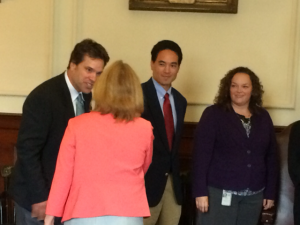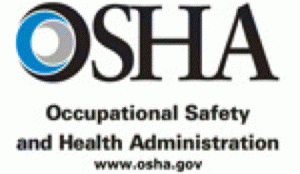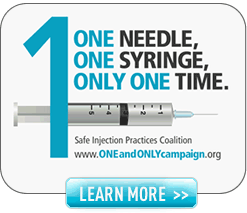
Anita Bertrand, CRNA, will be presenting at the upcoming AANA annual meeting
Anita Bertrand is a certified nurse anesthetist. She will be giving the 11th Annual Jan Stewart Memorial Lecture at the AANA 2014 Nurse Anesthesia Annual Congress
September 13-16, 2014 Orlando, Florida. We are grateful to her for sharing her story of addiction and recovery today and next week.
A recent report by the CDC identifies drug diversion in health care settings as the cause of potential exposure of blood-borne pathogens to nearly 30,000 Americans over a ten year period “Outbreaks of Infections Associated With Drug Diversion by US Health Care Personnel”. Drug diversion is commonly attributed to healthcare workers (HCW) who are addicted to drugs. In my experience as an addicted HCW, I understand how this inconceivable incidence can occur, although it seems incomprehensible that I could be the cause of such devastating harm to my patients, others and to myself. I also understand the impairment the disease of addiction causes to the HCW’s ability to make rational and safe decisions for both self and for patients under his or her care.
There are many unanswered questions and I don’t have all of the answers:
• How many HCWs are suffering from the disease of addiction/alcoholism and hiding in fear of the future, not getting treatment and/or have no access to treatment upon discovery?
• How many of my colleagues are practicing and do not recognize or are willing to admit they are chemically dependent?
• How many HCW recognize the dependency and have no idea what to do?
• How many families, friends and employers suspect a problem and don’t know what to do to help?
• Can helping addicted HCWs contribute to drug diversion prevention and lessen the risk to patients?
Addiction is a disease, not a choice.
My experience as a HCW with an addiction to opioids has demonstrated that I did not, and do not have, control over my behavior when actively using. The disease had taken over my thinking and decision making capabilities when it comes to the use of, and administering of drugs to patients.
My behavior was incomprehensible, both in terms of what I did in order to obtain the drug of addiction as well as in the manner in which I took care of patients. The harm caused to patients by HCWs is both direct and indirect, in the lack of care, provided by the HCW and in the inability to be cognizant of the care provided. The HCW active in the disease of addiction is constantly focused on when and how to obtain/divert the next drug, thereby not focused on the patient and his/her needs or care. I understand how unsafe injection practices occur when addicted HCW are not identified and treated. I also understand how the disease continues to progress to more and more risky behavior for both patient and provider when action is not taken to arrest the disease.
There are many limitations to identifying HCWs with the disease of addiction. My disease was permitted to progress for many months as I became more careless and harmful to both myself and patients under my care. In the end I was grateful to have been discovered, for I realize today that the fear and shame would have carried me to my death.
Stigma of Addiction
Fear and shame are the emotions that isolated me. Even though I knew how to find support and treatment, the tremendous fear and shame of being identified and removed from the workplace in order to get treatment paralyzed me. I knew the insurmountable stigma of this disease would follow me, in terms of my license and career.
The disease of addiction/alcoholism causes abhorrent and sometimes, criminal behavior. Discovered in active addiction/alcoholism, HCWs are commonly terminated. Removal from the workplace is the only appropriate action for both patient and provider safety. But with termination, they are left without a means for the desperately needed treatment for the disease. When HCWs have a stroke, a heart attack, are diagnosed with cancer, or a hyper/hypoglycemic crisis, they are removed from the work environment, encouraged and supported in treatment for their disease, and permitted in most cases to return to the work when their disease is stable or in remission. Additionally, it is common that friends and colleagues go to great lengths to assist the HCW by covering shifts, providing meals for the family, and even giving up PTO time to help the HCW in financial crisis due to their disease.
Compared with other disease conditions, support for the addicted HCW is in short supply. Lack of knowledge and understanding of the disease, stigma, and misjudgment prohibits others from being helpful. The recent USA Today piece, “Doctors, Medical Staff on Drugs Put Patients at Risk” covered some of my story. But, there is much more to say. My husband was left with a two year old, starting a new job and having no immediate family in the city while I went off to treatment 1000+ miles away for 18 weeks. Where were all our friends? Where were all the colleagues I’d worked with all those years? Nobody brought over a casserole or offered to babysit so he could have a break and take care of himself. The inability to ask for help extends to the families, who also face the stigma and shame surrounding this disease. Addiction and alcoholism impacts everyone who cares and knows the HCW.
This stigma only perpetuates the disease, the denial, and the ability to obtain lifesaving treatment. That fear, shame, and stigma prevented me from asking for help early in my disease when I had a moment of clarity. It prevented my husband from understanding the depth of the problem so that he could seek help for me.
Next week, Anita continues her story of addiction and recovery.




